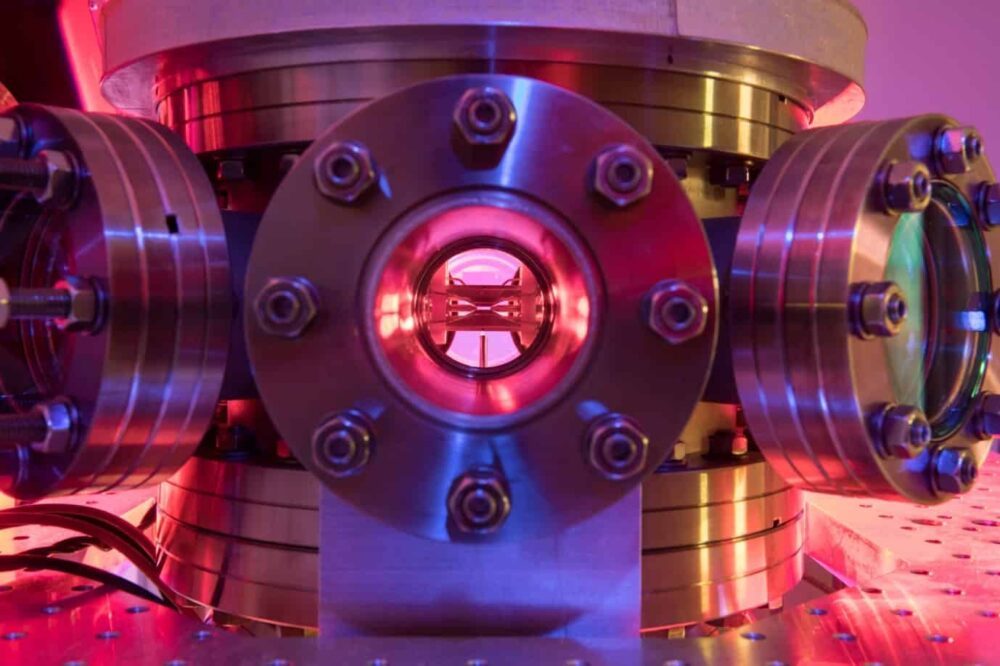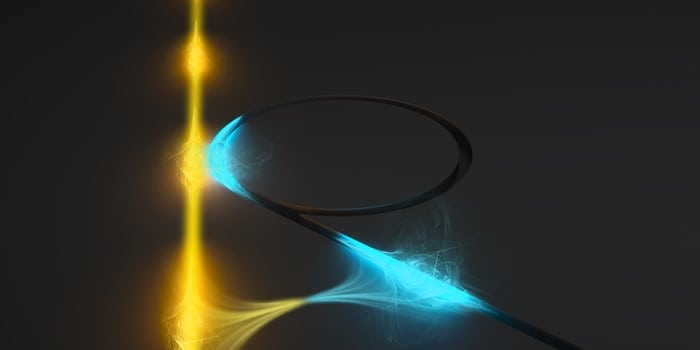Quantum physicists celebrated in October when the Nobel committee awarded a long-awaited physics prize to Alain Aspect, John Clauser and Anton Zeilinger for their pioneering research on quantum entanglement. But the community certainly hasn’t been resting on its laurels, and with so many other exciting developments in 2022, it’s hard to pick just a few highlights. Nevertheless, here are some results that stood out for us in the fields of quantum sensing, quantum information, quantum computing, quantum cryptography and fundamental quantum science.
In quantum mechanics, the principle of delocalization states that a quantum particle can, in some hand-wavy sense, be in multiple places at once. The principle of entanglement, meanwhile, states that quantum particles experience a connection that allows the condition of one particle to determine that of another, even across vast distances. In November, physicists at JILA in Colorado, US, used a combination of entanglement and delocalization to suppress noise that had previously made it impossible to sense accelerations below the so-called quantum limit. This limit is set by the quantum noise of individual particles, and it has long been a significant constraint on the precision of quantum sensors. Overcoming it is thus a major step forward.
Sending quantum information from one node in a network to another isn’t easy. If you encode the information in photons sent down an optical fibre, losses in the fibre eat away at the signal’s fidelity until it becomes unreadable. If you instead use quantum entanglement to teleport the information directly, you introduce other processes that, alas, also degrade the signal. Adding a third node to the network, as physicists at QuTech in the Netherlands did in 2021, only makes the task more difficult. That’s why it’s so impressive that the QuTech researchers followed up their earlier success by teleporting quantum information from a sender (Alice) to a receiver (Charlie) via an intermediate node (Bob). Although the fidelity of the Alice-Bob-Charlie transmission was only 71%, that is higher than the classical limit of 2/3, and achieving it required the researchers to combine and optimize several challenging experiments. Will Dave, Edna and Fred nodes join the network in 2023? We’ll see!

In case it wasn’t clear from the first two highlights in this list, noise is a huge problem in quantum science. This is as true for computing as it is for sensing and communication, which is why correcting these noise-induced errors is so important. Physicists made several advances on this front in 2022, but one of the most significant came in May when researchers at the University of Innsbruck, Austria and RWTH Aachen University in Germany demonstrated a full set of fault-tolerant quantum operations for the first time. Their ion-trap quantum computer uses seven physical qubits to make each logical qubit, plus “flag” qubits to signal the presence of dangerous errors in the system. Crucially, the error-corrected version of the system performed better than the simpler uncorrected one, illustrating the possibilities of the technique.
Information security is quantum cryptography’s USP, but information is only ever as secure as the weakest link in the chain. In quantum key distribution (QKD), one potential weak link is the devices used to send and receive the keys, which are vulnerable to conventional hacks (like someone breaking into a node and tampering with the system) even though the keys themselves are secure against quantum ones. One alternative is to use device-independent QKD (DIQKD), which uses measurements of Bell inequalities in photon pairs to confirm that the key-generation process hasn’t been fudged. In July, two independent groups of researchers demonstrated DIQKD experimentally for the first time – in one case by generating 1.5 million entangled Bell pairs over a period of eight hours and using them to generate a shared key 95 884 bits long. Although the key generation rate needs to be higher to make DIQKD practical for real-world encrypted networks, the proof of principle is stunning.

The other entangled particles in this highlights list are all identical: photons entangled with other photons, ions with other ions, atoms with other atoms. But there’s nothing in quantum theory that demands this kind of symmetry, and an emerging new class of “hybrid” quantum technologies actually relies on mixing things up. Enter researchers led by Armin Feist of the Max Planck Institute for Multidisciplinary Sciences in Germany, who showed in August that they could entangle an electron and a photon using a ring-shaped optical microresonator and a beam of high-energy electrons that passes the ring at a tangent. The technique has applications for a quantum process called “heralding” in which detecting one particle in an entangled pair indicates that the other particle is available for use in a quantum circuit – a great example of how today’s fundamental advances drive tomorrow’s innovations.
A grab bag of quantum weirdness
Finally, as is traditional (we’ve done it twice, therefore it’s a tradition), no list of quantum highlights is complete without a nod to all that is strange and mind-boggling in the field. So let’s hear it for the US researchers who used a quantum processor to simulate the teleportation of information through a wormhole in space–time; a group in Italy and France who put hard numbers on the indistinguishability of indistinguishable photons; an international team who used quantum violations of classical causality to better understand the nature of cause-and-effect; and an intrepid pair of physicists at the University of Edinburgh, UK, who showed that quantum signals would be a good way for technologically advanced aliens to establish contact across interstellar distances. Thanks for keeping quantum weird!













